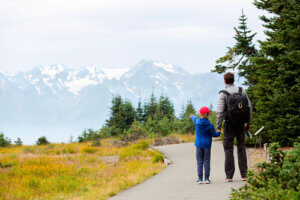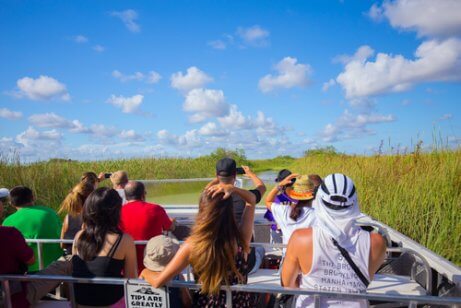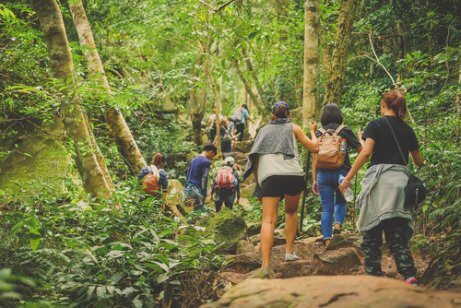Tips for Visiting a National Park

Since 1872, when the first reserve in the United States was designated (the famous Yellowstone Park), each country has had natural areas that people can’t use for any other purpose than to protect the local flora and fauna. We’ll give you some tips for visiting a national park for the first time. Although each park has different regulations, there are rules that you should follow in all of them.
Tips for visiting a national park
In 2017, the UN declared an “International Year of Sustainable Tourism for Development.” Following this declaration, many protected areas and natural reserves received more tourists than in previous years.
When visiting a national park, you should keep in mind that this is a type of “sacred” site. They are incredibly important to conserving biodiversity and the environment. These are also places where we can learn a lot about flora, fauna, history, and even art, thanks to the artistic manifestations of people who inhabited the region.
These are not only just recreational sites. It’s necessary to comply with certain rules during your visit. If you plan to visit a national park, we recommend that you pay attention to certain basic rules. This will prevent you from having any problems and promote conservation as well.
1. Drive with caution
First, you can’t expect paved roads or highways in reserves and parks. Depending on where you are, these roads might be gravel, dirt, or stone. Therefore, it’s a good idea to ask beforehand if you can enter the park in your family vehicle or if you need a special car. Regardless, you shouldn’t exceed 25 miles per hour while in the park. Remember, there are usually pedestrians walking around and animals on the loose.

2. Visiting a national park: Consult the visitors’ center
Most national parks have a visitors’ center where you can get tickets or maps. Then, the park rangers can also inform you about any issues, closed areas, and provide you with rules. Pay close attention! Also, don’t hesitate to ask the ranger questions. Often, we make mistakes due to a lack of knowledge.
3. Only camp in authorized sites
Some national parks allow camping, but only in specific places. As a result, except for a few exceptions, you can’t just set up your tent in the middle of the forest. Also, it’s important that you stay quiet while camping. Don’t turn on music or speak too loudly. Instead, just enjoy the sounds of nature.
4. Visiting a national park: Take your trash with you
While some parks have garbage containers, they’re not always right where you need them. As a result, the best thing to do is to make sure you have a trash bag with you for depositing any waste. Then, when you leave, you can throw the trash away.

5. Be careful with fire
There are many ways that a fire can start, especially in areas with dry grasslands or where it hasn’t rained recently. For example, even a glass bottle can create a magnifying glass effect, cigarette ash can spread, and poorly extinguished fires can spread.
So, don’t leave trash around, don’t smoke, and only use campfires where they’re permitted. Also, before you head to bed, make sure you pour lots of water on the fire to completely put it out.
6. Visiting a national park: Respect animals
When visiting a national park, you should understand one simple thing. We’re intruders there and the land actually belongs to the animals that live there. This means that we’re intruding on their homes.

Respecting animals means not getting too close, not trying to catch or feed them, trying to avoid scaring them, and not disturbing them if they’re sleeping or eating. For example, when you see a mammal, insect, reptile, or bird, you should stay still and wait for their reaction. Be careful because they may attack if they feel threatened.
7. Don’t take any souvenirs
A leaf, a branch, a stone… Everything is there for a reason. Imagine if every visitor who comes were to take something home with them. This could actually change the ecosystem. As a result, the only thing you’re allowed to take with you is the experience and any photos.
Since 1872, when the first reserve in the United States was designated (the famous Yellowstone Park), each country has had natural areas that people can’t use for any other purpose than to protect the local flora and fauna. We’ll give you some tips for visiting a national park for the first time. Although each park has different regulations, there are rules that you should follow in all of them.
Tips for visiting a national park
In 2017, the UN declared an “International Year of Sustainable Tourism for Development.” Following this declaration, many protected areas and natural reserves received more tourists than in previous years.
When visiting a national park, you should keep in mind that this is a type of “sacred” site. They are incredibly important to conserving biodiversity and the environment. These are also places where we can learn a lot about flora, fauna, history, and even art, thanks to the artistic manifestations of people who inhabited the region.
These are not only just recreational sites. It’s necessary to comply with certain rules during your visit. If you plan to visit a national park, we recommend that you pay attention to certain basic rules. This will prevent you from having any problems and promote conservation as well.
1. Drive with caution
First, you can’t expect paved roads or highways in reserves and parks. Depending on where you are, these roads might be gravel, dirt, or stone. Therefore, it’s a good idea to ask beforehand if you can enter the park in your family vehicle or if you need a special car. Regardless, you shouldn’t exceed 25 miles per hour while in the park. Remember, there are usually pedestrians walking around and animals on the loose.

2. Visiting a national park: Consult the visitors’ center
Most national parks have a visitors’ center where you can get tickets or maps. Then, the park rangers can also inform you about any issues, closed areas, and provide you with rules. Pay close attention! Also, don’t hesitate to ask the ranger questions. Often, we make mistakes due to a lack of knowledge.
3. Only camp in authorized sites
Some national parks allow camping, but only in specific places. As a result, except for a few exceptions, you can’t just set up your tent in the middle of the forest. Also, it’s important that you stay quiet while camping. Don’t turn on music or speak too loudly. Instead, just enjoy the sounds of nature.
4. Visiting a national park: Take your trash with you
While some parks have garbage containers, they’re not always right where you need them. As a result, the best thing to do is to make sure you have a trash bag with you for depositing any waste. Then, when you leave, you can throw the trash away.

5. Be careful with fire
There are many ways that a fire can start, especially in areas with dry grasslands or where it hasn’t rained recently. For example, even a glass bottle can create a magnifying glass effect, cigarette ash can spread, and poorly extinguished fires can spread.
So, don’t leave trash around, don’t smoke, and only use campfires where they’re permitted. Also, before you head to bed, make sure you pour lots of water on the fire to completely put it out.
6. Visiting a national park: Respect animals
When visiting a national park, you should understand one simple thing. We’re intruders there and the land actually belongs to the animals that live there. This means that we’re intruding on their homes.

Respecting animals means not getting too close, not trying to catch or feed them, trying to avoid scaring them, and not disturbing them if they’re sleeping or eating. For example, when you see a mammal, insect, reptile, or bird, you should stay still and wait for their reaction. Be careful because they may attack if they feel threatened.
7. Don’t take any souvenirs
A leaf, a branch, a stone… Everything is there for a reason. Imagine if every visitor who comes were to take something home with them. This could actually change the ecosystem. As a result, the only thing you’re allowed to take with you is the experience and any photos.
This text is provided for informational purposes only and does not replace consultation with a professional. If in doubt, consult your specialist.








